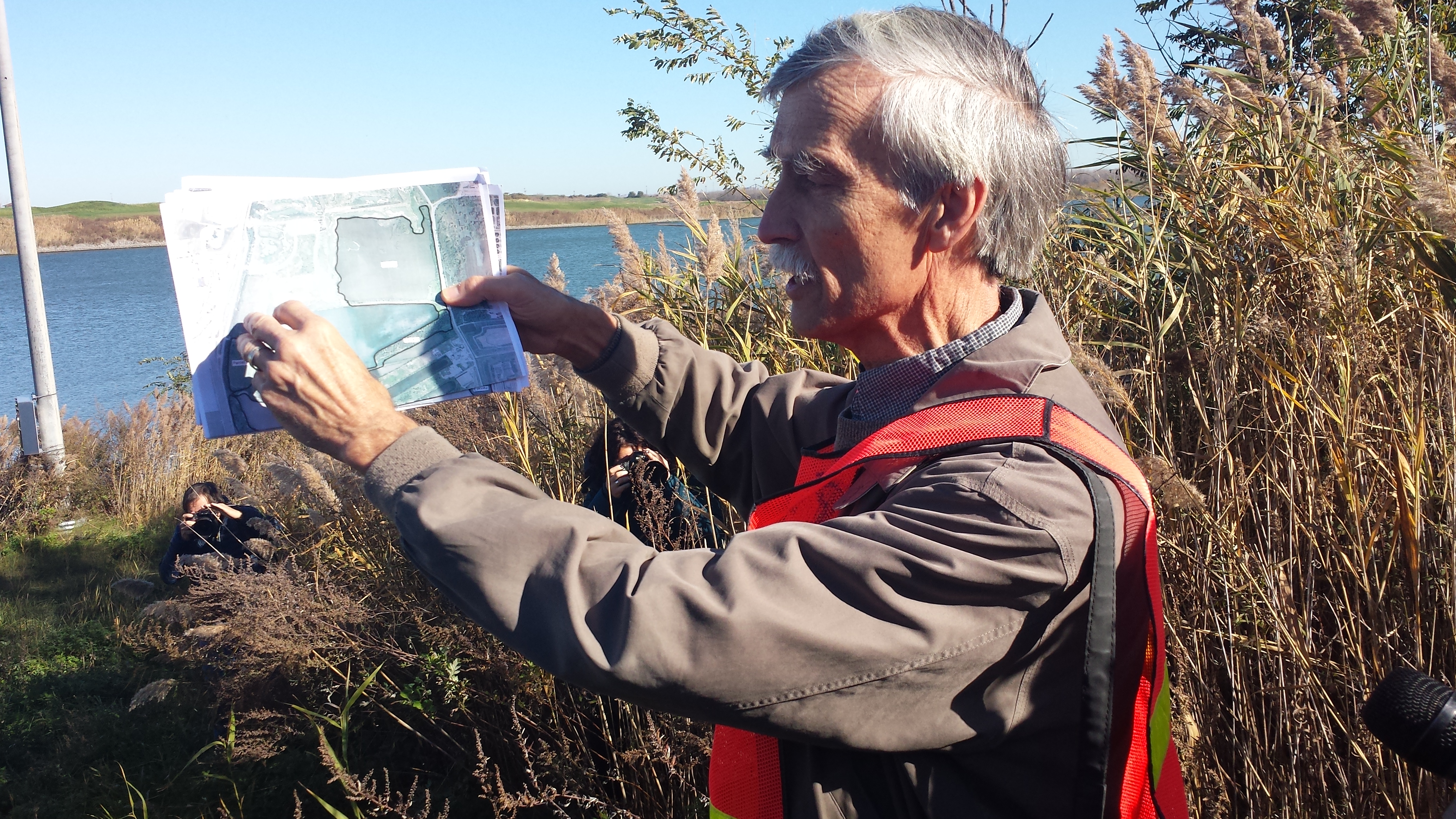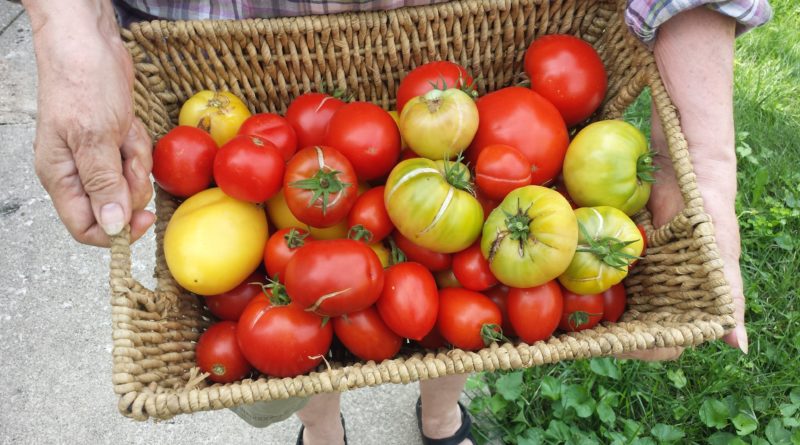April 15, 2017 – Wha’d Life Be Without Homegrown Tomatoes?
![]() The NC Tomatoman comes to The Mike Nowak Show
The NC Tomatoman comes to The Mike Nowak Show
I met Greg LeHoullier in February of 2016 at the Chicago Botanic Garden. It was at a luncheon that allowed a bunch of local garden writers to meet and greet the author of the then-recently-published book Epic Tomatoes: How to Select & Grow the Best Varieties of All Time. For some reason, the folks at CBG consider me a garden writer. Go figure. I was certainly happy to get a free lunch out of the affair. Later in the year, the book went on to be awarded the Gold prize as the Best Overall Book at the 2016 Garden Writers Association conference in Atlanta, Georgia.
Oh, and by the way, he is the guy who named the Cherokee Purple tomato. If your response is “Wha?” you don’t care about growing tomatoes. If your response is “Wow!” I urge you to pick up the book.
And it took me only 14 months to book him on my show, which is actually pretty good, when you consider that it has taken me years to get some people here. I’m actually patting myself on the back for getting this one done in what, in my world, is a timely fashion.
I’m not an expert on tomato books, but Epic Tomatoes is a ridiculously informative, accessible and well photographed book about the fruit that is probably most Americans’ favorite vegetable. Yes, it’s a fruit, but must we really get started down that path?
LeHoullier’s book contains a list of 250 recommended tomatoes, which is stunning when you understand that until the middle or even late 19th Century, many people (especially in America) thought tomatoes were poisonous. It means that once the folks started hybridizing these puppies, they really went to town. One hundred fifty or sixty or seventy years later, we have thousands of varieties.
In his book, LeHoullier takes pains to write about everything you need to know about tomatoes: history, the best flavor, how tomato color happens, how to start from seed, how to grow, how to harvest, how to save the seeds, pests, diseases, and even how to mess with nature to create your own varieties. Oh, and some recipes, too. What’s not to like in a tomato book?
If you want a sense of the kinds of tomatoes that LeHoullier thinks are important, here is a blog post from April 14, 2017 in which he lists his current favorites:
- Cherokee Purple – combination of performance, flavor, beauty – and my luck in getting to name it!
- Lucky Cross (or Little Lucky – both great!) – the only big yellow/red bicolors I enjoy eating because they takes like its mother, Brandywine! This is also the first variety that I collaboratively created, starting from a surprise bee-made cross (Larry Bohs of NC was my partner in crime on these)
- Cherokee Chocolate – first mutation I found, equal to Cherokee Purple in every way except skin color (this one has yellow skin, Cherokee Purple clear). One of “tomorrow’s heirlooms”, born in 1995.
- Cherokee Green – another surprise – a flesh color flip out of Cherokee Chocolate, and so delicious. The amber skin is the ripeness/ready to pick indicator – born in 1997.
- Lillian’s Yellow Heirloom – One of my top 3 (along with Cherokee Purple and Sun Gold) – spectacular in every way – incomparable flavor.
- Green Giant – descends from Lillian’s Yellow, sent to me by a German gardening friend – spectacular flavor – barely changes color when ripe.
- Dester – a new favorite, first sampled in a Seed Savers Exchange tomato tasting a few years ago. Looks like German Johnson, tastes like Brandywine.
- Sun Gold – the only hybrid on my list, and one of my few “must grow every year” varieties.
- Brandywine – perhaps the most famous heirloom tomato of all, well known since the mid 1980s – finicky and variable season to season, but when it is great, it is superb – the single greatest large tomato I’ve eaten is Brandywine (this is the pink potato leaf Brandywine).
- Sweet Scarlet Dwarf – one of the very best flavored of our 70 new Dwarf Tomato Project releases – beautiful potato leaf plant, medium large scarlet red fruit that awaken your taste buds.
- Dwarf Sweet Sue – my favorite of all of the dwarfs – so I named it after my wife! Medium sized, bright yellow, scrumptious.
- Dwarf Blazing Beauty – another of our dwarfs, this time rich orange juice hued, and unusual in its relatively low sugar level…this is one tart, zippy tomato.
If you noticed the “dwarf” varieties at the end, that’s because LeHoullier has become involved in something called the Dwarf Tomato Breeding Project. On his website, he writes,
Though the yields of dwarfs will never approach that of indeterminate varieties, the ability to plant them much more closely or grow in as little as 5 gallon pots are adequate compensation. What we are producing in this project is a color, size and shape range that will allow those who are space constrained to experience the nature of many of the well known heirloom types, but in a growth habit that is much easier to manage. We are excited about what we are creating, and are anxious, as well as finally ready, to share the very best of these with gardeners.
And Peggy and I are excited to have Craig LeHoullier on the show this morning to talk about the history and the future of tomatoes.
The SCARCE Focus on Energy Film Festival
This spring, SCARCE is holding what they’re calling a world language film festival and competition focused on energy efficiency, the “smart grid” and “smart meters” that’s open to area high school and college students. With a twist. The films are all in languages other than English, and are designed to reach those in the area who speak languages other than English. According to the SCARCE website, ‘
“Over 60 languages are spoken in DuPage County and we would love to reach everyone! This is meant to be a challenging, competitive, interdisciplinary learning experience that will encourage creativity and cultural awareness while exploring the human side of technology.”
SCARCE Founder and Executive Director Kay McKeen says the festival attracted 14 team entries from seven DuPage county high schools, plus the College of DuPage and Benedictine University. The students wrote, directed, acted and produced short videos for the juried competition. And some really nice prize money will be awarded to the winning teams, as the festival was sponsored and funded by the Illinois Science and Energy Innovation Foundation.
According to SCARCE, “registered teams attended workshops to receive professional videography instruction as well as technical instructions to use the equipment. Teams learned about Smart Meters and the Smart Grid. Submitted videos were reviewed by a professional translation company and submitted to a panel of judges for review.” (Full disclosure here, Peggy and I were both judges for this competition, and I’ll also be emcee for the awards ceremony.)
These young film makers have created some incredibly impressive and creative films, and everyone is invited to attend the Film Festival screening and awards ceremony on Sunday, April 23, at the Studio Movie Grill, 301 Rice Lake Square, in Wheaton. And, you can also view the films online and cast your vote for the People’s Choice Award.
Kay McKeen joins us this morning to preview the film festival screening next week and the Earth Day events that lead up to it.
Speaking of those events, here are a few that you should know about.
-

Ders Anderson from Openlands showing plans for making the grounds around Lake Calumet accessible to Illinois citizens once again. 6th Annual Earth Day Hike at Lake Calumet, Friday, April 21
Harborside Int’l Golf Course – Clubhouse,11001 S. Doty Avenue East (111th & I-94 / Bishop Ford Xway)Meet for coffee & rolls at 9:30 till 10,Orientation, 10 – 11, Hike 11-12:30 - March for Science Chicago, Earth Day, Saturday, April 22
- Earth Day at Sugar Beet Co-op – 7am-9pm. Sugar Beet is offering fun and meaningful ways to learn more and support our planet. Come meet the farmers who are working to sustainably grow healthy foods, write your “New Earth Year’s Resolution” and post it on our Earth inspiration board, or check out a book from the Oak Park Public Library book bike and learn more about composting, reducing their footprint, and beyond. We will also be donating 5% of our sales this day to an organization or program chosen by the community. Sugar Beet Food Co-op, 812 Madison St, Oak Park. 708-948-7656. SugarBeet.coop.
- 28th Annual Earth Day Parks & Preserves Clean-Up – 9am-12pm. Register to be a volunteer at one of the available parks. If you would like to volunteer please sign up for one of the open sites, or join us at Humboldt Park or Kickapoo Woods (Forest Preserves of Cook County) for a larger celebration. More info: fotp.org/events-page/earth-day.
- Des Plaines Earth Day Celebration – 10am-3pm. Celebrate Earth Day, connect with nature, and show your support for Mother Earth. Includes interactive exhibits, Peace Fire & Water Ceremony and more. All welcome. The Historic Methodist Campground, 1900 E Algonquin Rd, Des Plaines. More info: dpparks.org and Shift2Green.org.
- Earth Day Concert & Fundraiser: Not a Hoax – 6-10pm. Features live music by Air Credits; opening sets by Sidewalk Chalk and DJ Audio Jack; food by chef Abra Berens; cocktails by Paul McGee; wines by Andrew Algren; beer from Lagunitas; and environmental programming by NRDC. The party is a call to action and a fundraiser, seeking to raise awareness about climate change while demanding that lawmakers recognize global warming as a serious, and real, problem. Garfield Park Conservatory, 300 N Central Park Ave, Chicago. Tickets: Ticketfly.com/event/1438745.

